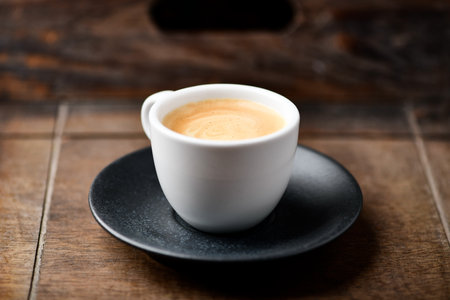Origins of Coffee in Victorian Britain
The story of coffee in Victorian Britain is one deeply intertwined with the nations evolving tastes, colonial ambitions, and the rise of a new urban elite. While coffee had first appeared in England during the 17th century, it was not until the Victorian era that its presence became truly transformative. Exotic and alluring, coffee arrived on British shores through complex trade routes, primarily via the bustling ports of London and Liverpool, importing beans from far-flung territories such as Yemen and later British colonies. Initially, coffee was considered an exotic curiosity—an indulgence reserved for the aristocracy and intellectual circles who frequented the earliest coffee houses. These establishments quickly became hubs of lively discourse and social innovation, earning a reputation as penny universities where ideas could be exchanged for the price of a cup. As industrialisation swept through Britain, the beverage’s image shifted; coffee began to symbolise modernity, refinement, and cosmopolitan taste. The Victorian era thus witnessed coffees ascent from rarefied luxury to fashionable staple, embraced by society’s upper echelons and setting the stage for a profound cultural transformation that would resonate throughout British life.
2. Coffee Houses: Hubs of Sociability and Debate
The Victorian era witnessed a remarkable transformation in the United Kingdom’s social landscape, with coffee houses emerging as prominent epicentres for intellectual exchange and spirited debate. Far from being mere venues for consuming coffee, these establishments became vital engines of the public sphere, uniquely blending hospitality with vibrant conversation. Victorian coffee houses attracted a diverse clientele—merchants, writers, politicians, academics, and artisans—each drawn by the promise of stimulating discussion and the democratic spirit that pervaded these spaces.
Intellectual Exchange and Political Discussion
Coffee houses during this period were not only refuges from the urban bustle but also crucibles of new ideas. Regulars engaged in lively debates on philosophy, science, literature, and current affairs. The open-table format encouraged the cross-pollination of opinions across social strata, which contributed to a culture where merit often outweighed status. Newspapers, pamphlets, and books circulated freely among patrons, fostering an informed citizenry and amplifying the reach of radical thought—a key driver in shaping Victorian public opinion.
Social Gatherings and Networking
These establishments functioned as informal clubs where business deals were struck and alliances forged. The convivial atmosphere made them ideal for networking; it was not uncommon for enterprising Victorians to meet potential collaborators or patrons over a cup of freshly brewed coffee. The tables below illustrate the typical functions and societal groups associated with Victorian-era coffee houses:
| Function | Description | Primary Patrons |
|---|---|---|
| Intellectual Debate | Discussion of literature, science, and philosophy | Writers, Academics |
| Political Discourse | Debate on reform, policy, and governance | Politicians, Activists |
| Business Networking | Negotiations, deal-making, partnerships | Merchants, Entrepreneurs |
| Social Gathering | Camaraderie, leisure, matchmaking | Diverse Urbanites |
The Enduring Influence on British Society
The legacy of Victorian coffee house culture persists in Britain’s modern cafés and public forums. These institutions set a precedent for open dialogue and community engagement that is still evident today. By providing a platform for free expression and collective learning during a transformative period in British history, Victorian coffee houses played an instrumental role in shaping both civic life and national identity.

3. Distinctive Preparation and Serving Methods
The Victorian era marked a pivotal point in the evolution of coffee preparation and service within the United Kingdom, blending continental influences with distinct British sensibilities. Brewing techniques during this period were refined, moving away from earlier rudimentary methods towards more sophisticated processes that mirrored the growing appreciation for coffee’s complexities.
Brewing Techniques of the Victorian Age
Central to Victorian coffee culture was the introduction and popularisation of devices such as the percolator, vacuum pot, and drip filters. The percolator, in particular, became a staple of many well-to-do households, prized for its ability to extract bold flavours while delivering clarity in the cup. Meanwhile, establishments catering to a cosmopolitan clientele often showcased elaborate siphon brewers—glass vessels which not only brewed coffee but also served as a testament to scientific progress and decorative artistry.
Service Rituals and Etiquette
The manner in which coffee was served reflected Victorian ideals of decorum and hospitality. Coffee service typically involved ornate silver or porcelain pots paired with matching cups and saucers, often adorned with intricate patterns befitting the era’s penchant for embellishment. During social gatherings or after formal dinners, hosts would preside over the pouring of coffee, reinforcing their role as arbiters of taste and refinement. The ritual was deliberate: sugar cubes or loaf sugar were delicately offered by tongs, while fresh cream was presented in small pitchers, allowing guests to customise their beverage according to personal preference.
Equipment: A Blend of Utility and Aesthetic
The equipment employed in Victorian Britain was as much about visual appeal as it was about function. Coffee grinders ranged from robust cast-iron mechanisms stationed on kitchen tables to elegantly crafted hand mills designed for parlour use. Heating devices included spirit lamps and alcohol burners, providing precise temperature control—a crucial factor for extracting nuanced flavours from freshly roasted beans. This commitment to both utility and aesthetic not only elevated the act of brewing but also positioned coffee as a centrepiece of domestic sophistication.
In essence, Victorian-era coffee preparation and service methods encapsulated a unique blend of technical innovation, social ritual, and decorative flair. These characteristics helped forge a lasting legacy that continues to inform British coffee culture today.
4. Coffee’s Role in Victorian Social Class and Gender
The Victorian era was a period marked by distinct social hierarchies and rigid gender roles, and coffee culture played a nuanced part in both reflecting and shaping these dynamics. As coffee became more widely available across the United Kingdom, its consumption patterns began to mirror the stratification of society, while also subtly influencing the expectations and interactions between men and women.
Coffee Consumption Across Social Classes
Coffee’s trajectory from an elite indulgence to a more accessible beverage is a testament to the evolving social landscape of Victorian Britain. In affluent households, coffee was associated with refinement and status, often served in ornate parlours during afternoon gatherings or after elaborate dinners. Conversely, for the working classes, coffee houses and street vendors offered an affordable alternative to alcohol, providing a space for respite and socialisation without the stigma of drunkenness.
| Social Class | Coffee Setting | Key Characteristics |
|---|---|---|
| Upper Class | Private Parlours, Gentlemen’s Clubs | Elegant service, exclusive blends, association with refinement |
| Middle Class | Coffee Houses, Family Homes | Social gatherings, intellectual discussion, moderate luxury |
| Working Class | Street Stalls, Public Coffee Rooms | Affordable drinks, communal atmosphere, alternative to pubs |
Gender Dynamics in Victorian Coffee Culture
The gendered nature of Victorian society extended into coffee culture as well. While men frequented coffee houses for business and debate, women’s participation was largely confined to domestic spaces or all-female gatherings. Coffee mornings became popular among middle- and upper-class women as socially acceptable venues for networking and mutual support. However, serving coffee also reinforced traditional feminine roles—hosting was seen as a marker of a competent household manager.
The Duality of Coffee Spaces: Male vs Female Domains
| Coffee Space | Predominant Gender | Primary Activities |
|---|---|---|
| Coffee House / Club | Male | Business dealings, political discussion, reading newspapers |
| Home Parlour / Morning Gathering | Female | Socialising, charity organisation, fostering community ties |
Coffee’s Subtle Influence on Social Mobility and Gender Roles
The democratization of coffee consumption enabled new forms of social mobility; aspiring families would emulate upper-class rituals to assert their place within the social hierarchy. At the same time, women leveraged coffee gatherings for charitable initiatives and educational pursuits, gradually expanding their influence beyond the domestic sphere. Thus, coffee was both a mirror of Victorian values and a catalyst for incremental change in class structures and gender relations.
5. Notable Events and Literary References
The Victorian era was a period marked by rapid transformation, both socially and industrially, and coffee found itself woven into the very fabric of these changes.
Historical Milestones Involving Coffee
During the 19th century, coffeehouses were not merely places for refreshment; they became venues for pivotal historical events and lively public debate. The infamous Chartist meetings, which championed working-class rights, often took place in bustling London coffeehouses. Additionally, significant discussions concerning the Great Exhibition of 1851—a showcase of British innovation—were fuelled by cups of robust coffee, as intellectuals and organisers gathered to exchange ideas in these establishments.
Coffee in Victorian Literature
Victorian literature offers a fascinating lens through which to view the era’s coffee culture. Charles Dickens, ever attentive to social detail, frequently referenced coffee in his novels as a symbol of comfort and modernity. In “Bleak House,” for example, characters are depicted sharing coffee during moments of respite, highlighting its role in daily life. Similarly, Elizabeth Gaskell’s works often portray coffee as an essential element at gatherings, underscoring its importance in both domestic settings and social rituals.
Cultural Integration and Enduring Legacy
Through these notable events and literary mentions, it is clear that coffee transcended mere refreshment to become an integral part of Victorian society. It was present at crucial junctures in history and immortalised in the pages of classic English literature. This deep integration not only reflects the beverage’s popularity but also underscores how thoroughly coffee had permeated the United Kingdom’s culture during the Victorian era.
6. Transition towards Modern British Coffee Culture
The gradual decline of the traditional Victorian coffee house marked a significant cultural shift in the United Kingdom’s approach to coffee consumption. By the end of the 19th century, coffee houses had begun to lose their foothold as focal points for intellectual and social engagement, largely supplanted by the surging popularity of tea rooms and public houses. This transformation was driven by changing social dynamics, with new leisure habits and architectural trends favouring smaller, more intimate gathering spaces.
Despite this decline, the legacy of Victorian-era coffee culture laid the groundwork for modern British coffee appreciation. The seeds sown during the Victorian period—such as the emphasis on communal experiences and a curiosity for global flavours—endured through generations. As Britain moved into the 20th century, waves of immigration introduced continental café styles, particularly from Italy and Eastern Europe, reigniting public interest in espresso-based drinks and more sophisticated brewing methods.
The Evolution of Coffee Preferences
By the late 20th and early 21st centuries, British consumers began to embrace specialty coffee culture, drawing inspiration from both continental Europe and the emerging third-wave coffee movement. Artisanal roasting practices and single-origin beans became increasingly popular, echoing the Victorian fascination with origin stories and quality. Today, independent coffee shops thrive alongside multinational chains, each offering unique interpretations of what it means to enjoy coffee in a contemporary British context.
Continuity and Change
While the bustling debate halls of Victorian coffee houses have faded into history, their spirit endures in today’s cafés—spaces that foster creativity, community, and conversation. The modern British coffee scene owes much to its Victorian ancestors: an enduring quest for quality, an openness to innovation, and a deep-rooted belief in the power of shared experiences over a cup of coffee.


